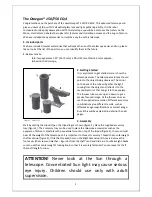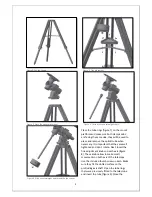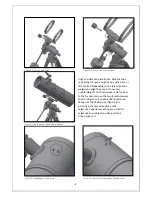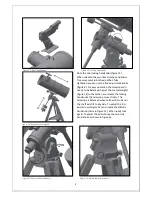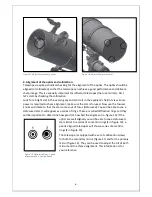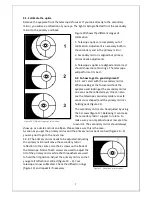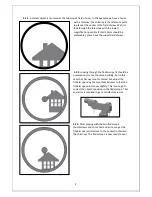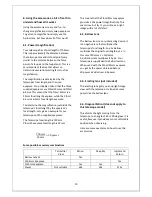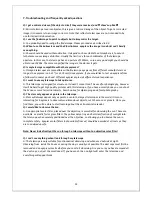
12
7. Troubleshooting and frequently asked questions
Q: I get a mirrored view of the objects. Like if they were reversed, and
R
show’s up like
ᴙ
R: Mirror telescope reverse objectes, this is give a mirrored image of the object. To get a corrected
image it is necessary to an image corrector. Note that reflector telescopes are not intended to be
use for terrestrial observation.
Q: I use the finderscope to point to objects but I always miss the target.
A: You probably need to realign the finderscope. Please proceed as described in 4.2.
Q: When I use the barlow lens and the Plössl 6.5mm eyepiece the image is so dark I can’t hardly
see anything.
A: Power should be used with moderation. It depends on how stable the atmosphere is, too much
turbulence causes image distortion. Usually the limit is 2x for each millimeter of the telescope
aperture. In this case, the telescope has an aperture of 150mm, so in a very good night you should be
able to reach 300x. The more magnified the image is, the darker it gets.
Q: Is my telescope compatible with other eyepieces ?
A: Omegon telescopes are compatible with all telescope eyepieces from different manufacturers as
long as the eyepiece is a 1.25” (or 31.75mm) size eyepiece. If you would like to test an eyepiece from
a fellow astronomer go ahead. Different eyepieces provide different visual experiences.
Q: I want to use my telescope to take pictures.
A: This telescope is designed for visual use. It doesn’t mean it can’t be used for photography, however
it will be hard to get high quality pictures with this telescope. If you have a smartphone you can shoot
the Moon or some terrestrial objects. Search online for digiscoping and afocal photography.
Q: The stars only appear as points in the telescope.
A: Stars will always appear only as points, even in the largest telescopes in the world. It is more
interesting for beginners to observe two-dimensional objects, such the moon or planets. Once you
find these, you will be able to start learning about the astronomical calendar.
Q: I would like to observe the Sun.
A: An appropriate solar filter, placed over the objective, is essential for observing the sun. These are
available as plastic foil or glass filters. They allow only a tiny and harmless fraction of sunlight into
the telescope, when securely positioned over the objective, so allowing you to observe the sun in
complete safety. Eyepiece solar filters (not available from us) should be avoided at all costs as they
are considered unsafe.
Note: Never look directly at the sun through a telescope without an objective solar filter!
Q: I can’t see anything when I look through my telescope
A: The telescope is only suitable for astronomical observing and when used outside at night.
Observing from inside the house or during the day is usually not possible. The dust caps must first be
removed and an eyepiece inserted before you can start observing. Are you sure you have removed all
the dust caps, not just the small ones? If you have not, then no light will enter the telescope and
everything will appear black.


